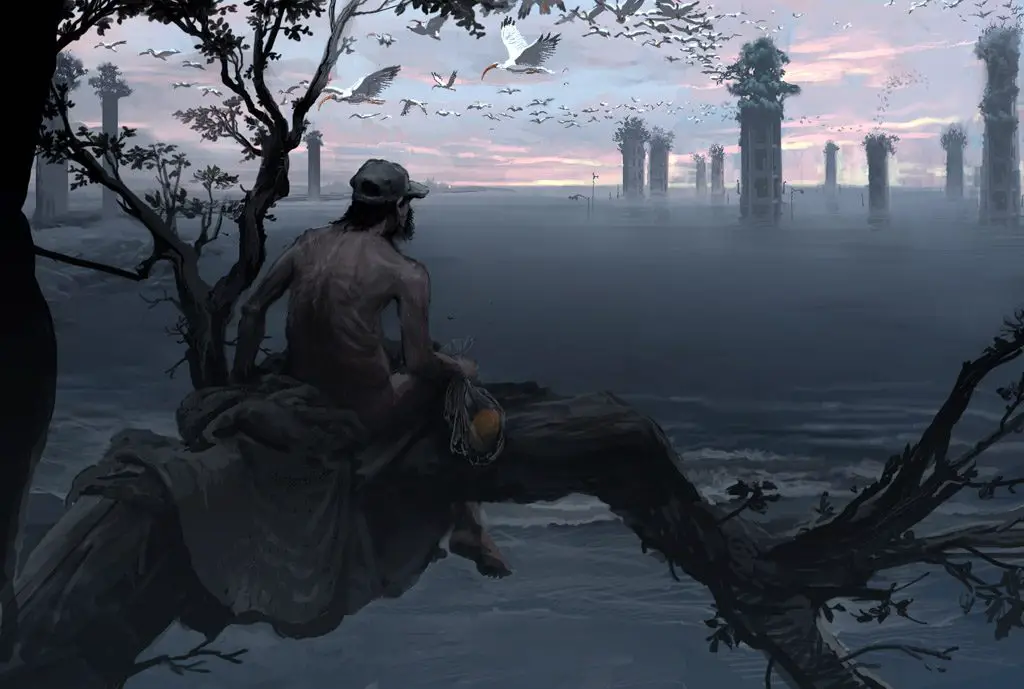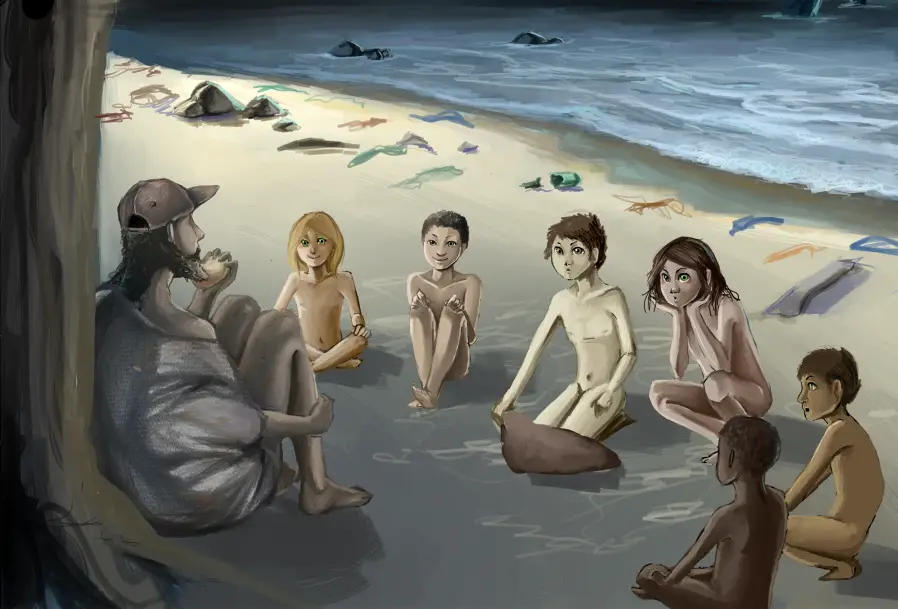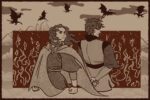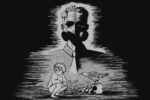“The Handmaid’s Tale,” Margaret Atwood’s 1985 dystopian novel, which was recently adapted to a series currently streaming on Hulu, is a frightening take on the fate of women’s rights under a brutally authoritarian, restrictive theocracy.
In recent years, and especially since Trump took office, the novel’s themes and messages have become increasingly, and urgently prescient. Much of the language used in “The Handmaid’s Tale” is unironically on display in GOP philosophy. In a recent New York Times article written by Atwood, the author speaks about the themes of her work in light of modern battles for human rights.
But “The Handmaid’s Tale” is not Atwood’s only prophetic dystopian work. While the novel is a cautionary tale about a strong-arm, authoritarian government with an outright hatred toward women, Atwood’s 2003 novel, “Oryx and Crake,” paints a chaotic vision of a decentralized and hyper-connected world stripped of any power beyond the corporate, where those with money and patents toy with the lives of others with unlimited authority and zero scrutiny.

The novel follows Snowman, a man living in a tree after the collapse of human civilization, looking after a new species of genetically modified humans. The narrative depicts his struggles to survive in the overgrown, post-human landscape, while simultaneously jumping back in time to follow Snowman, then Jimmy, through his childhood and adulthood, his life story tracing the arc of human civilization’s end.
What equally important lessons can be learned from “Oryx and Crake”?
1. The Dangers of Unregulated Capitalism
If there’s one thing you should take away from “Oryx and Crake,” it’s that the free market should never be the ultimate authority. Jimmy grows up in a future where corporations are essentially the most powerful entities on earth. Fortunate people with corporate jobs are afforded the luxury of living in the compounds, walled-in complexes owned and policed by their employers, complete with schools for employees’ kids, where everyone works for the company.
The compounds are modern feudal castles, surrounded by a vast expanse of slums known as the Pleeblands. In the Pleeblands, people fight to survive day to day, working jobs for measly wages, completely vulnerable to crime and pollution. Their life is devoid of properly maintained infrastructure, and they live in destitute conditions without any rights or protections. There are no police in the world of “Oryx and Crake,” only the CorpSeCorps, who are privately owned security forces who work for the nearest corporate compound.
The governments of the world, weakened by the infrastructural wear and tear of increasingly drastic climate change, have happily handed more and more responsibility to these corporate entities, who do even less to combat the effects of environmental destruction, except for when it pays.
2. Science Without Limits Is Dangerous
Many of the corporate entities residing in these compounds specialize in genetic fabrication. Jimmy’s father originally works for a company that creates and sells Pigoons, a species of overly large pig spliced with human DNA used to grow and harvest organs for those who need replacements. Similar animal splices are described throughout the novel. Jimmy gets a pet rakunk (half-racoon, half-skunk) as a boy. A breed of bioluminescent rabbit populates Snowman’s world.
Corporations capitalize on genetic modification, selling its possibilities as a service for customers who want to boost their appearance or sexual performance. “Oryx and Crake” makes a point of displaying just how difficult it is to contain such tampering. Some of the animals created are not as harmless as the gentle, friendly rakunk.
Splices have unintentionally destroyed entire habitats, sometimes even human infrastructure. Such mistakes are quickly exterminated. In the post-apocalyptic world Snowman lives in, the hyper-intelligent pigoons run wild in herds, hunting down other animals, and people, with sinister sophistication.
3. Dysfunctional Male Friendship
If you’ve read the book, you know the title is a reference to the two most formative figures in Jimmy’s life, Oryx and Crake. Crake is his best friend from childhood, a strange boy always dressed in black, who displays an alarmingly advanced intellect, and very little empathy.
The boys attach to each other because they find each other funny. They play strategy games together, which Crake consistently dominates and forces Jimmy to continue playing with him, as he’s fascinated with the multiple outcomes possible.
It’s clear that Crake and Jimmy are wired very differently. Crake is, overall, much more intelligent than his friend, focused primarily on science, especially genetic modification, while Jimmy is more interested in the written arts. Crake consistently puts down Jimmy’s interests, at one point classifying the creation of art as a the human race’s version of an overly-complicated mating call, a means to an end for getting laid.
Jimmy is naturally very jealous of Crake. Crake goes to a prestigious institute, while Jimmy ends up at one of the last humanities colleges. Through childhood and into adulthood, the two are wordlessly competing with one another, but never addressing it. Because of this silent distance facilitated by their envy of each other, they fail to truly get close. Jimmy is unable to recognize danger signs in Crake’s behavior, which ultimately manifests in a catastrophic fashion.
All science fiction aspects aside, Atwood does an excellent job at portraying the components of a dysfunctional male friendship, one in which both members lack the necessary emotional skills to communicate, and an ingrained need to compete facilitates constant resentment. Sadly, I can confirm Atwood really nails it.
4. Cultural Numbness and Cold Rationality
The internet was expected to bring people around the world closer together and foster a sense of shared empathy, but has in many ways accomplished the opposite. “Oryx and Crake” shows how increased interconnectedness does not necessarily breed compassion. In the world Atwood creates, people are so bombarded by sex and violence that very little is shocking.
A section of the novel details Jimmy and Crake aimlessly getting high and browsing the dense tangle of the web. They watch all-nude news channels, live pay-per-view executions, and child pornography, wordlessly searching for something to make them feel, but without success. Here again the dangers of an unregulated free market present themselves, as none of the content the two teenagers view is considered very illegal.
The world of “Oryx and Crake” is like the fall of Rome. Atwood brilliantly injects dread into the narrative’s atmosphere, an unshakable sense that something terrible is coming, because the world is spinning into nighttime, for a long time. Humanity is becoming numb as a coping mechanism for what they feel is next.
This environment breeds in Crake an unrelenting and cynical hatred of humanity, bordering on a god complex. Within Jimmy is engendered an equally dangerous need to romanticize what he’s seeing. He looks into the eyes of a young Asian girl in a child porn and becomes inexplicably fascinated and obsessed with her.
Crake finds her later, as an adult. Her name is Oryx.
5. Women Are Not Ideas
Oryx is the character with the most psychological strength. A passage details her experiences, beginning with when she was sold from her village into sex trafficking as a young girl, where she then survived by cooperating, stealing when possible and developing an impenetrable shell. Oryx is difficult to read, partly because she is so accustomed to acting, and partly because Jimmy and Crake each see her in their own, distorted fashion.
She made it to North America when she was purchased, with a group of other women, by a man who kept them all in his garage. Crake later tracks Oryx down through a computer algorithm designed to help people find prostitutes. He recruits her, both for her services and as a crucial partner in his genetic engineering project. Jimmy is also brought aboard for marketing purposes, and immediately falls for Oryx. The two begin an affair behind Crake’s back.
Neither Crake nor Jimmy are ever truly seeing Oryx as a person. Crake is inspired, viewing her as a spectacular model of what humanity could be, and a means to an end to achieve his goals. Jimmy sees Oryx as a beautiful thing, miraculously survived in the exotic world outside the compound walls.
Considering “The Handmaid’s Tale,” the choice to make the sole female main character in “Oryx and Crake” a distant enigma must be intentional on the part of Atwood, a way to wordlessly show how men often can’t get out of their own heads and see women as people on their own. Jimmy and Crake consider themselves her liberators, but Oryx is still performing the version of herself they each want to see.
There is a lot to say about “Oryx and Crake” and a great deal of incredible aspects not mentioned for the sake of not spoiling anything. The novel is a haunting and beautiful assault on the senses, leaving the reader spinning. Atwood’s prose is as sharp as ever, at once darkly witty and devastating. “Oryx and Crake” is an excellent companion to “The Handmaid’s Tale,” both works of speculative fiction demanding the readers’ attention even after the book has closed. Read them both, and keep your eyes open. They’re good books, but you don’t want to find yourself living them.


















[…] Sursă foto […]